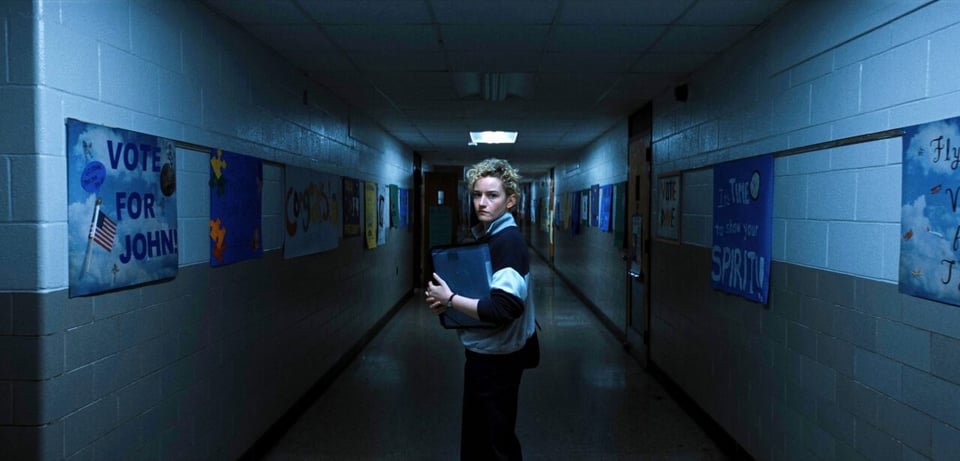Kids These Days Don't Go To Class Anymore
Hi all and welcome to week two of the 2025 So Desensitized Spooky Season Spooktacular! We’re talking about some modern witches this week with Zach Cregger’s Weapons and Robert Eggers’ The Witch, before we move on to some literary ladies next week. Happy reading, stay spooky, and read banned books!
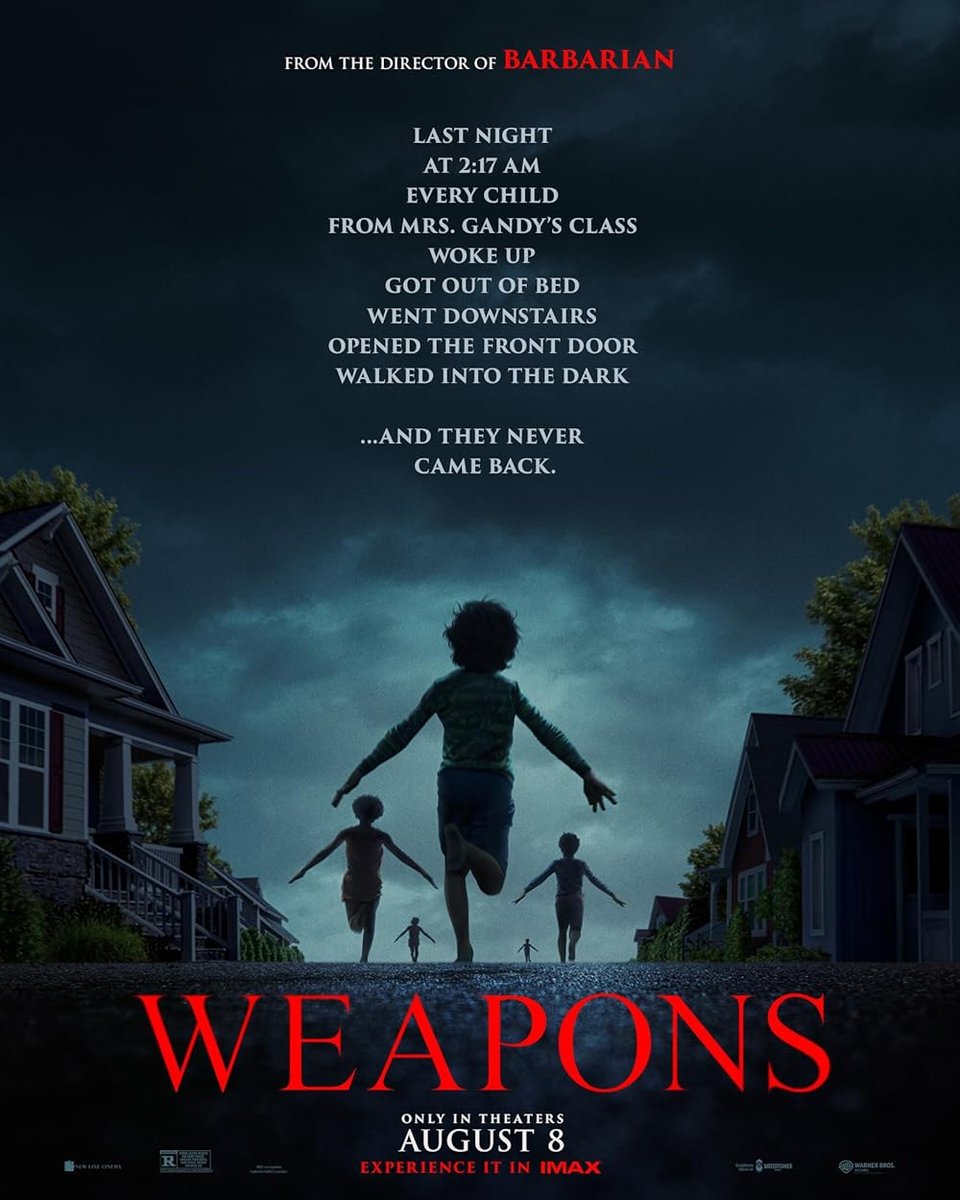
Weapons is, to put it simply, a BFD. It’s looking to be one of the biggest horror movies of 2025, up there with Guillermo Del Toro’s Frankenstein, and Ryan Coogler’s Sinners, which is saying a lot. Early reviews compared it to The Exorcist and other infamous blockbuster horror movies. But is it as good as all that? And, given this year’s theme, what does it have to do with witches? The short answers are yes, but it’s different than the marketing made you think, and it’s complicated, respectively.
In terms of quality - writing, cinematography, acting, characters, etc. - Weapons checks all the boxes. It examines the cataclysmic event of all the children in Miss Gandy’s class vanishing overnight through the perspectives of different people in town as the mystery progresses in a way that is nothing short of masterful. It’s just that, for some people, that’s not what they wanted out of it. Some people wanted more paranormal horror than mystery, which, let’s be clear, it has plenty of. Other people didn’t so much want a third act or a reveal, and the thing about that is that that’s on them. Really, from what I could tell, people who didn’t like Weapons went into it wanting something it never said it would give. And that’s not the movie’s fault, or the creators’. Baseline, it was a very good modern horror movie, and an excellent one to bring up to counter the complaint of ‘no one makes anything original these days’.
But what, you may be asking, about the witches? And that’s what we’re actually here to talk about today. Because it’s real complicated.
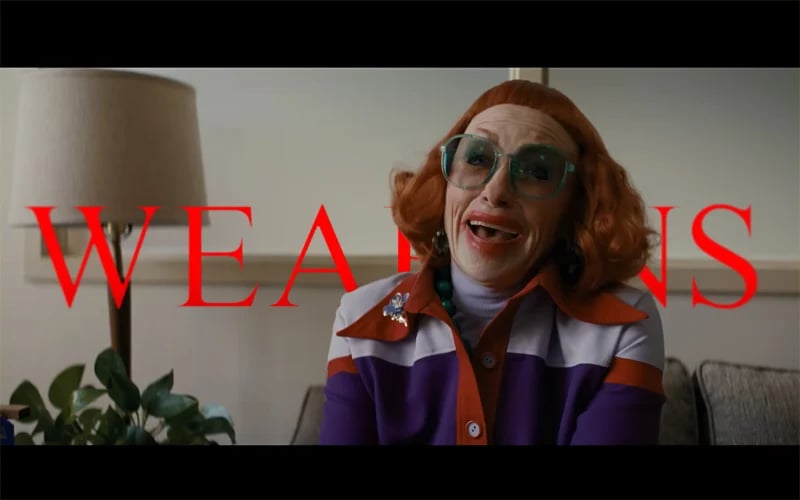
In the much-discussed third act - SPOILERS AHEAD, OBVIOUSLY - it is revealed that the reason for the disappearances is Gladys, the aunt of the one child who didn’t leave, and a witch who needs the children to make herself young and healthy. Pretty standard witch stuff. What isn’t standard is Gladys herself. She is dressed in obnoxiously bright colors for most of the movie, in an overexaggerated, almost drag-like style, in distinct contrast to the upper middle-class suburbia that she has stopped in. She knows how to manipulate the sympathies of local people to an old woman who is here to care for her sister and nephew, and is not afraid to do so to get what she wants. And what she wants is children, and violence. She uses her magic to control people, make them harm themselves, and others, just to bow to her cause. Eventually, she is defeated by her own magic and the kids are rescued. But she isn’t the only witch in the movie. In fact, she isn’t really the person I’m going to spend the most time in this article on. The other witch in Maybrook, unlikely as she may seem, is Miss Justine Gandy.
Justine is a bit of a hot mess. She’s new in town, teaches at the local elementary school, and every student in her class has vanished. She’s sleeping with a married man and drinking her troubles away. Also, everyone in town hates her now, because they think she took their children. One of the first things we see happen to her, in the first half hour or so of the movie, is that someone writes the word ‘WITCH’ on her car in bright red paint, just after she is run out of a town meeting by grieving parents. She may not really be a witch, and she definitely isn’t the reason those kids went missing, but the town thinks she is, and that’s what matters.
The thing about being a witch, ultimately, is that it’s more up to other people than it is to you. If people decide you’re a witch, then you’re a witch. And, more likely than not, they’re going to at one point or another. Because the thing you’ll always hear about witches is that they’re the only mythical woman that is not connected to men in some way. So, to a patriarchal society, any woman that doesn’t center her life around men might as well be a witch. Even if there is a real, actual witch doing all of this, the blame will go on the woman who’s new in town, unmarried, and has short hair. Not the old woman who’s just in town so that her sister can care for her at the end of her life. Because what would she ever do? She has a family. Everyone knows that once a woman has a family she becomes a normal, respectable, member of society. But, on some level, we’ve seen stories like this before. Not in this exact format or context maybe, but ‘innocent woman wrongfully accused and finds actual perpetrator who just so happens to be another woman’ isn’t an unfamiliar tune to seasoned moviegoers. So what makes Weapons so different? What makes it such a landmark of modern horror cinema?
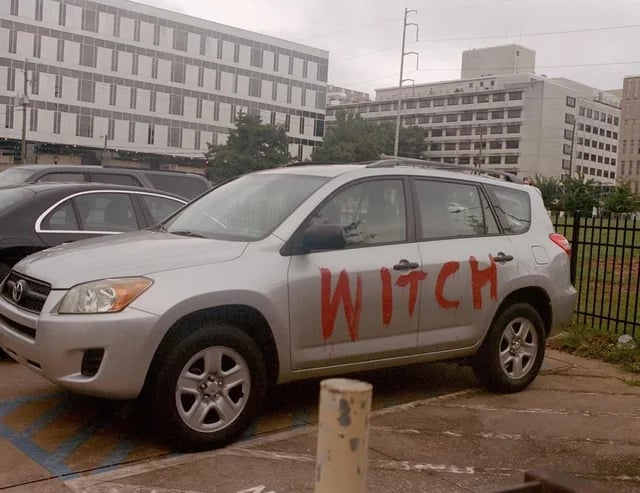
To answer that question, we have to ask ourselves, as we so often do on this blog, what widespread cultural fears are at the time of this movie’s creation. And that is both easier and harder to do when the time the movie was made is the time we’re living in right now. It’s easy to look at the news, at all the fearmongering, and all the paranoia. It’s much harder, by design, to make something of it. So let’s pick apart what the audience is meant to be scared of in this movie. What I got from it was mob mentality, things happening to The Children (™), parasites, and, strangely enough, homophobia (or maybe drag queens).
Let’s start with mob mentality because it’s the easiest. The way the town unites against Justine following this unimaginable tragedy is a prime example of mob mentality. They are united under one cause, and anything anyone says that might make them think on person is responsible will turn them on that person like - say it with me now - weapons. It just takes one person suggesting that they have a solution, or at least a cause, for their pain, and it sets them all on an absolute warpath. They might not be able to bring their children back, but they sure as hell can find whoever took them and make them pay. It doesn’t matter to them if the person they’ve found actually did it, it just matters that they could have. And that kind of violence is very familiar to modern viewers, who have seen people in positions of power blame all kinds of things on all kinds of people just to take the blame off of themselves. So that’s one hard-hitting point of Weapons.
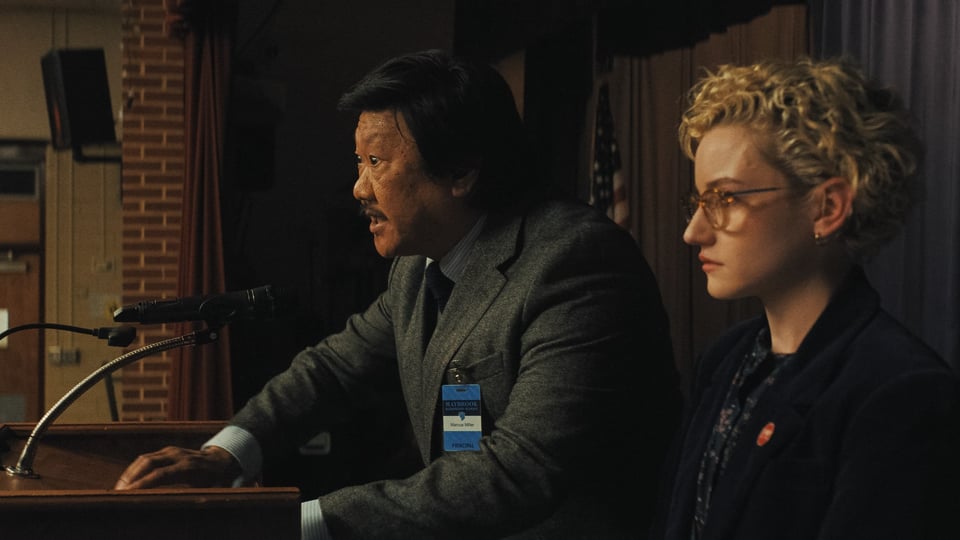
Next is things happening to The Children (™). This has been a very widespread cultural fear in America since basically forever. From rumors of razor blades and drugs in Halloween candy to the local women casting sickness spells on young girls, the idea that something might happen to children is a familiar one to see in horror. Think Poltergeist, think Carrie, think Child’s Play. Everyone has always been afraid of children getting hurt, it’s just that the reasons have changed from year to year. Now, the topical fear is school. What might happen to your children at school? Might they not come home, or might they never go back? What could their teachers do to them there? And this is, again, not a new fear (see my essay on Child’s Play for more about that), but it has been increasing these past two decades or so. The obvious fear is, of course, school shootings. But that isn’t the one that Weapons is playing into. One fear that has been spread largely by the media is that of corrupt teachers. Curriculums being changed to avoid ‘woke’ learning, religious groups advocating for their religion to be taught alongside math and reading, etc. This is what Weapons leans on, this idea of corrupt teachers harming precious, white, innocent, suburban children. Maybrook turns on Justine Gandy because it cannot see her as the victim in the situation, it just sees her as a leech, sucking the life and joy out of their community and their children.
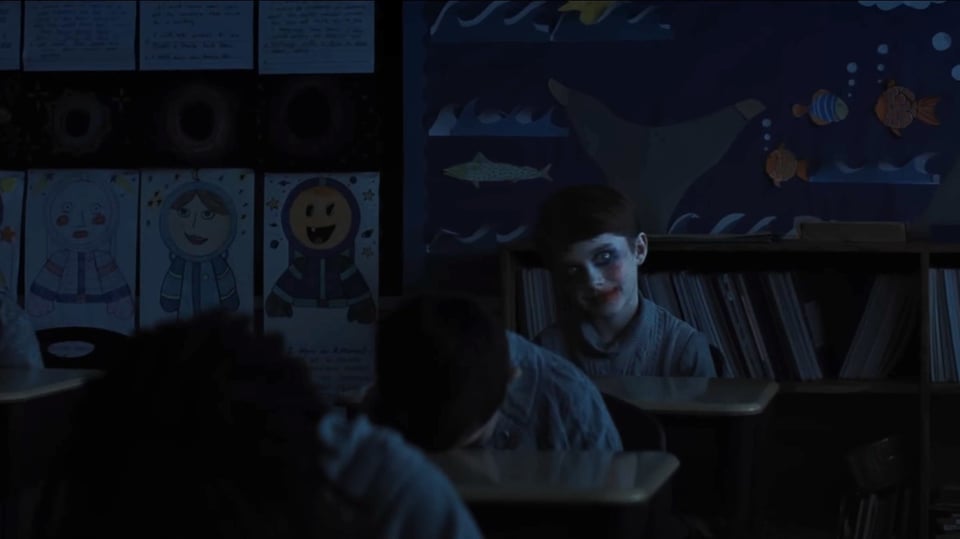
Which brings us to our next fear, this one a little more abstract. Let’s talk about parasites. The movie does so as well, on two occasions that I can recall, both pertaining to Gladys. Right before Gladys puts the spell on the principal, Marcus, that makes him kill his husband and then go after Justine, then again as Alex prepares to gather personal items for Aunt Gladys to hypnotize his classmates with. This, of course, suggests that Gladys herself is a parasite, feeding off the energy of Maybrook and making it eat itself alive, which is later confirmed when she says that she needs the children to be well again. But what purpose does this serve other than clever foreshadowing? Well, the thing about parasites is that they’re not always fungi or worms. Sometimes, even in real life, they’re people. The thing about widespread societal fears is that they’re not often noticed. Most people don’t know they have them, or are implementing them into their movies, like I’ve discussed before, specifically in relation to Damien Leone’s comments about his Terrifier franchise. But, wherever you go, there you are, and there, too, are your fears. And if your subconscious fears are about, say, social and economic parasites like billionaires, then, well. That’s gonna be reflected in your work, like it or not.
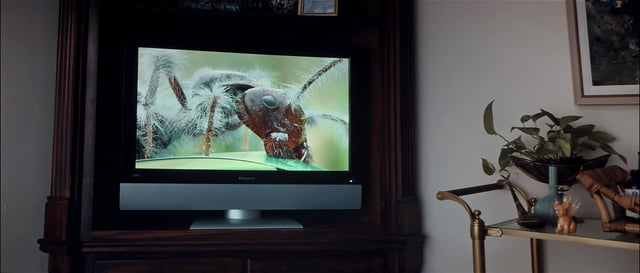
And now, finally, the most abstract fear of them all: homophobia or maybe drag queens. Because it wasn’t an accident that Marcus, the first adult we see put under Gladys spell, is gay and married to a man. And it certainly wasn’t an accident that what she made him do, before anything, was kill his husband. Gladys represents the destruction of a nice, suburban community, yes, but she also represents older ways of thinking. She is willing to let another woman take the fall for her horrific actions, participatory, even, in that woman’s downfall. The first person she thinks to hurt is, of course, the principal who is clearly suspicious of her, but the choice to make him gay can’t mean nothing. Neither can the way Gladys is done up almost drag-style in stark contrast with everything around her. Everything about Gladys is overexaggerated as far as it can go, until it isn’t. Coupled with the interwoven fear of children being corrupted, the character that is actually hurting the kids being done up like a drag queen doesn’t seem like much of a mistake. Now, all this isn’t to say that I found this movie homophobic - I very much didn’t. What I think it was really doing was playing right into the current prevalence of homophobia in a very tongue-in-cheek way. It’s almost too obvious, that connection, which makes me think it was done like that on purpose. Oh, and if Gladys looks very eighties to you, maybe think about the kind of horror that was being made in the eighties and the fear behind it. Trust me.
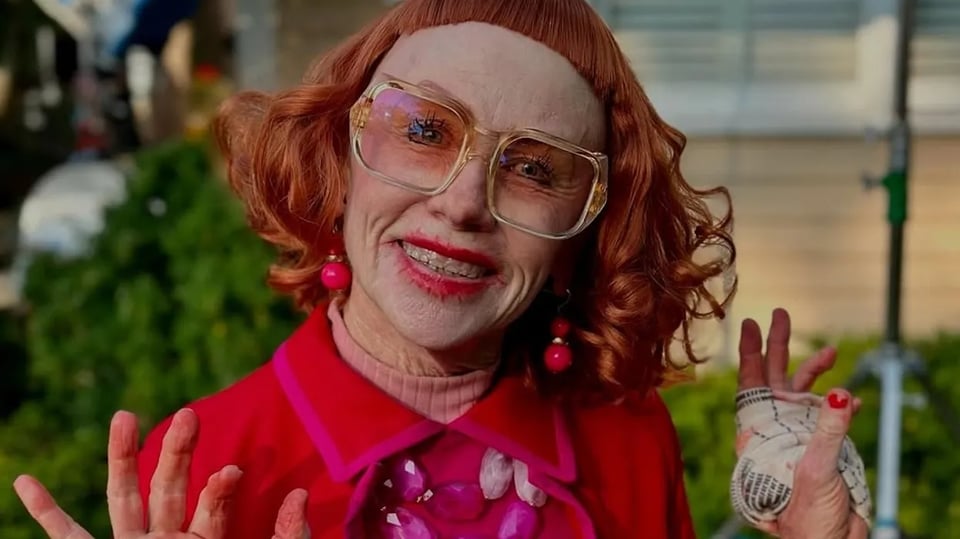
After that comprehensive and rambling analysis of the reasons for the different kinds of fear in Weapons, you may be wondering what the point of all this is. What this movie is even about, maybe. Again, how it all comes back around to witches. And the answer to all of those wonderings is the same.
At its core, what Weapons is about is the blame put on women, especially women in positions of power, for virtually every bad thing that happens. Economic downturn? Women. Strange illness in the colony? Women. Children missing? Probably a woman. And really, what is a witch is not a blamed woman? Gladys is a witch in the literal sense, because she chose to be, to wield that power to keep herself alive forever. But Justine Gandy is also a witch, because she had to be. Because the town decided for her that she was, so now she can’t ever escape that. Even though some of the kids have started talking again, even though the actual perpetrator was found, it will always be, in part, Miss Gandy’s fault. Justine Gandy is a witch not by her own actions, but by the actions of the people around her. She may never have cast a single spell, but she was burnt at the stake anyways, and what else makes a witch?
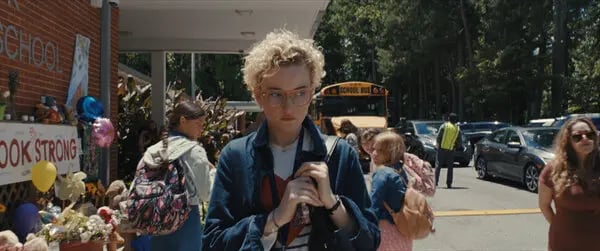
Thanks for reading, all! Bit of a long one this time, but the next one should be shorter. See y’all on Friday for some New England gothic action! Happy reading and stay spooky! 🎒🚸🚓🔪🩸
